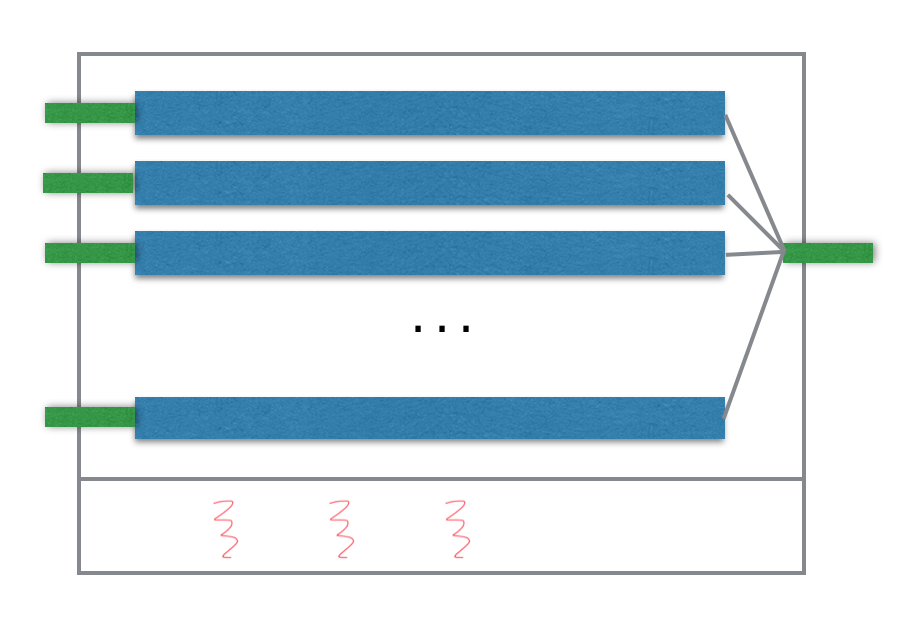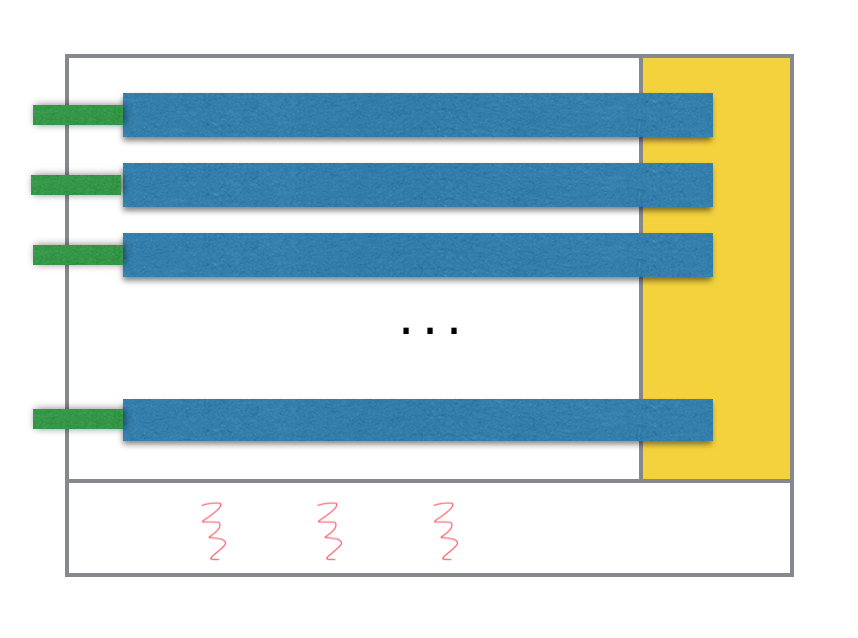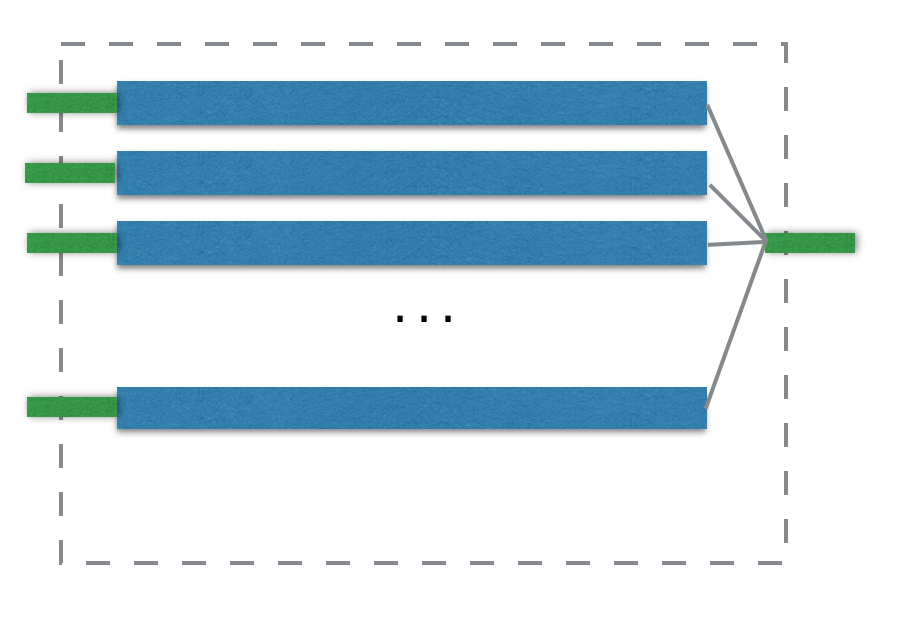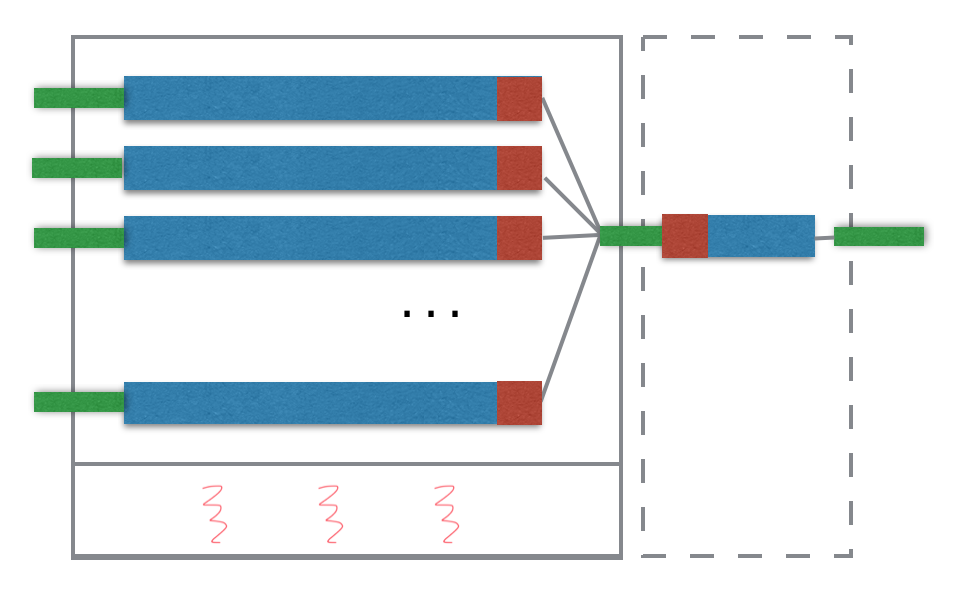Poppy
poppy is dataframe library for java, which provides common SQL operations (e.g. select, from, where, group by, order by, distinct) to process data in java.
Unlike other dataframe libraries, which keep all the data in memory, poppy process data in streaming manager. That is, it is more similar as Java8 Stream library, but relational version.
Here is a simple example. We have a Student class
public class Student {
private int studentId;
private String name;
private int grade;
private int room;
private int height;
private int weight;
...
}In SQL, we have a query like this
select
grade,
room,
avg(weight) as weight,
avg(height) as height
from Student
group by grade, room
order by grade, roomHere is the Poppy's version
List<Student> students = ...;
DataFrame
.from(students, Student.class)
.groupby("grade", "room")
.aggregate(
avgLong("weight").as("weight"),
avgLong("height").as("height"))
.sort("grade", "room")
.print();Getting Started
Requirement
Java 8 or higher
Dependency
Maven
<dependency>
<groupId>io.tenmax</groupId>
<artifactId>poppy</artifactId>
<version>0.1.8</version>
<type>pom</type>
</dependency>
Gradle
compile 'io.tenmax:poppy:0.1.8'
Features
- Support the most common operations in SQL. e.g. select, from, where, group by, order by, distinct
- Support the most common aggregation functions in SQL. e.g. avg(), sum(), count(), min(), max()
- Custom aggregation functions. by java.util.stream.Collector
- Partition support. Partition is the unit of parallelism. Multiple partitions allow you processing data concurrently.
- Multi-threaded support. For CPU-bound jobs, it leverages all your CPU resources for better performance; for IO-bound jobs, it reduces the waiting time, and take adventages of better concurrency.
- Suitable for both batch and streaming scenario.
- Lightweight. Comparing to Spark DataFrame API, it is much more lightweight to embed in your application.
- Stream-based design. Comparing to joinery, which keeps the whole data in memory. Poppy's streaming behaviour allows limited memory to process huge volume of data.
Documentation
Input
There are two kinds of input.
- DataFrame.from(Class<T> clazz, java.util.Iterable... iterables)
- DataFrame.from(io.tenmax.DataSource dataSource)
The first one uses JavaBean Conventions to define the table schema. This is the simplest way to create a dataframe
List<Student> students = ...;
DataFrame df = DataFrame.from(Student.class, students);
The second one allows you most flexible way to define the data source. In data source, it should define
- The schema (by a list of columns)
- Partition count
- The iterators for specified partition
- The mapping from one data to data in all columns.
DataSource dataSource = ...
DataFrame df = DataFrame.from(dataSource);
Output
There are several ways to output the data
- Iterator
- forEach
- toList
- toMap
- DataFrame.to(DataSink dataSink)
The first two methods are provided from java.util.Iterable interface. So you can use for(T t: dataFrame) to iterate through the dataframe.
toList and toMap provide quick methods to output dataframe to collections. Both provide the list version and reflection version. The later exports the data by the JavaBean conventions. toMap method should define grouping columns by groupby method to define the key of map.
The latest version provides the most flexible version of output. Th results are called back directly in the multi-threaded context, offering the best level of parallelism to output the results to destination, just like Hadoop does.
Operations
Project
Project is the same as select in SQL. Project maps one column to another name, or merges multiple columns to one column. In the following example, we use SQL as analogy to explain each operation.
SQL
select name, weight, height from student;Poppy
df.project("name", "weight", "height");Another example is to alias a name to a column.
SQL
select
name,
weight as w,
height / 10 as h
from student;Poppy
import static io.tenmax.poppy.SpecUtils.*;
df.project(
col("name"),
colMap("weight").as("w"),
colMap("height", Float.class, (Integer height) -> (height / 10f)).as("h"))Filter
Filter is the same as where or having in SQL. Filter is used to keep the rows which pass the rule.
SQL
select * from Student where height > 170;Poppy
df.filter(row -> row.getInteger("height") > 170);Aggregation
SQL
select
count(*) as c,
avg(weight) as weight,
avg(height) as height
from Student;Poppy
df.aggregate(
count().as("c")
avgLong("weight").as("weight"),
avgLong("height").as("height")
);You can define custom aggregation by Java8 Collector interface.
Poppy
df.aggregate(
aggreMap("weight", Integer.class, Collectors.summingInt((Integer i) -> i)).as("wi"))
)Of course, poppy supports aggregate with grouping.
SQL
select
grade,
room,
avg(weight) as weight,
avg(height) as height
from Student
group by grade, roomPoppy
df
.groupby("grade","room")
.aggregate(
avgLong("weight").as("weight"),
avgLong("height").as("height"));Sort
Sort the dataframe by columns.
SQL
select *
from Student
order by weight, height;Poppy
df.sort("weight", "height");Specify the sorting orders.
SQL
select *
from Student
order by weight asc, height desc;Poppy
import static io.tenmax.poppy.SpecUtils.*;
df.sort(asc("weight"), desc("height"));Distinct
Select the unique records by columns.
SQL
select distinct grade, room from Student;Poppy
df.distinct("grade", "room");Partition and Parallelism
Partition is the unit of parallelism. To leverage the multicore computing power, we can provide more than one partitions in the data sources. And in dataframe, we use the parallel(n) to define number of threads running in the thread pool
DataFrame
.from(myDataSource)
.parallel(4)
.aggregate(...)
.forEach(row -> {/*...*/})Execution Context
Poppy introduces the concept of execution context. One execution context contains a thread pool with n threads and m partitions. It treat one partition as a task, and one thread only processses task at the same time. Internally, it make the projection, filtering, accumulation of aggregation as a pipeline. Once all tasks complete, the thread pool shutdown and release all the resources.
The following diagram is an example of multiple partition with 3 threads in pool. And the final results would pipe the result to the queue and be pulled by the caller thread.

Another case is the DataFrame output the result to a DataSink directly. Here the result is invoked in the threads of execution context.

If there is no parallel threads defined in the execution context, the default behaviour is to use the caller thread to iterate through all the partition sequentially. So there is no thread spawned in this case.

For some operations, they would create a new execution context. Such as, aggregation, sort, distinct. Currently, they would create a new context with only one partition. The following example is a aggregation example, the partition data would be accumulated as a accumulated value and be combined all the results to the final result.
